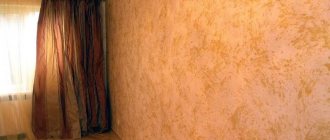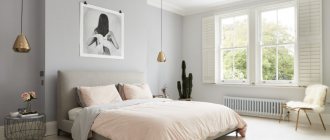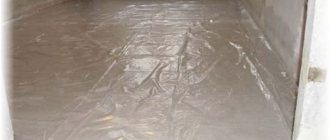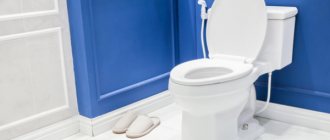Many owners of apartments and country houses prefer to use paints when decorating their premises. With the help of decorative techniques it is possible to achieve excellent results. By looking at the photo of wall painting, the consumer can find the most suitable option for the room.
There is a huge selection of colors on sale. Modern paints do not emit harmful fumes; the work is easy to do yourself. It is necessary to carefully prepare the surface before applying color.
Alkyd paint
The material is resistant to mechanical damage and is not afraid of moisture. It is popular among consumers.
To obtain the dye, manufacturers use alkyd varnishes, solvents and fillers. The required pigment is added to the composition. The manufacturer also introduces additives into some types of colors that protect the resulting layer from fungus and mold.
Effective color combinations in the apartment
Two color techniques are used in interior design:
- a combination of contrasting shades - warm and cold, bright and neutral;
- a combination of shades of the same color scheme - deep blue and light blue, dark mocha and light cappuccino.
The abundance of contrasting details tires the perception, the room looks tacky. The exception is the universal combination of black and white. The choice of shades depends on the purpose of the room.
For kitchen
Colors are selected depending on the purpose of the room:
- cooking - neutral and bright shades: gray and orange, white and red;
- combination with the dining room - wood, terracotta, brown shades in combination with pastel colors;
- relaxing with a cup of tea or coffee - minimalistic black and white, beige, gray, coffee, lilac tones.
See also
Making a decorative well at your dacha with your own hands with step-by-step instructions
The color of the walls affects the appetite: a warm palette awakens, and a cold palette depresses. Tones associated with food are suitable for the kitchen: citrus yellow, apple, coffee brown.
For the living room
Free time is often spent in the central room. Sometimes the living room is combined with an office or library. In a multifunctional space, it is especially important to highlight zones. Blue-gray, white-green, yellow-brown combinations, as well as light and rich lavender shades will cope with the task.
For the bedroom
The following color combinations are appropriate in a room for sleeping and relaxing:
- graphite and light gray;
- white with beige;
- powdery pink, peach and smoky grey.
A calming atmosphere in the bedroom is created by pastel colors in combination with rich plum, burgundy or blue.
Other premises and rooms
A room for small children is decorated in blue and peach colors. Woody, yellow and beige shades will help schoolchildren get ready for school. In the office, brown and golden tones are combined with malachite green.
Classics for the bathroom - marine shades. A light ceiling will visually increase the height of a narrow bathroom.
Emulsion paints
There is no unpleasant odor when working with the composition; other types of materials can be applied to the resulting surface. Emulsion paints are a homogeneous composition of antiseptic, thickener, fillers and latex. This dispersion, after drying, forms a durable, uniform coating.
Acrylic color is used for painting walls in apartments in rooms with low humidity. Does not change color when exposed to sunlight. The latex type is abrasion resistant and will hide small surface cracks. It can be used for painting wallpaper and plaster.
The water-based composition has the following features: there is practically no smell when painting, and it dries quickly. Silicone paint is flexible and can be used on any surface.
Types of compositions that can be used in interior design
There are enough paints in stores on different bases that can be used in residential areas. There are quick-drying compositions with a glossy and matte surface, as well as decorative mixtures that, when applied in several layers, can transform the interior beyond recognition.
Manufacturers offer paints in the form of a white base, which can be tinted in any color, or ready-to-use compositions in a wide palette of shades.
Types of paints that are used:
- Alkyd . The coating is used on any substrate, does not deteriorate in conditions of variable and high humidity and can be used in any room.
- Oily . It is made on the basis of drying oil, which takes a long time to dry and emits an unpleasant odor. Rarely used for indoor use on walls, but will work great outdoors.
- Enamel . It is made on a varnish base, which gives a characteristic shine when dried. The composition dries quickly and when used on walls, it creates a durable coating that is not afraid of water and mechanical damage.
- Acrylic. Designed for walls and ceilings in dry rooms. The composition has excellent value for money. Acrylic paint lends itself well to tinting and will retain its color for the entire period of use.
- Latex. Used in rooms with high humidity and in the kitchen. The coating does not allow water to pass through and washes well, does not absorb dirt and odors, but is prone to fading in the sun.
- Water-based. The paint can be tinted well in any color, applied and creates a durable coating that can hide minor defects. Disadvantages include loss of color saturation during operation.
- Silicone. The composition is safe and, when applied, creates a durable film that is easy to clean and repaint if necessary. Silicone paint is compatible with most compositions on other substrates and does not require careful surface preparation.
Any of these coatings can be used in residential areas and are safe after drying. The main thing when choosing a decorative coating is to take into account the conditions of use. When painting walls in rooms with variable humidity, water-based paints are not recommended.
Textured paint
When decorating interiors, you can create a relief surface on the walls. To do this, use textured paint, which will help add original elements to the design of the room. The viscosity of the composition allows you to maintain the resulting relief.
Textured paint is produced on the basis of acrylic and polymer components. It includes components that, during the application process, form a relief surface.
This paint will mask minor surface defects and can be washed. It differs in thickness, so it is applied with a spatula, roller, or brush.
Design options for different rooms with painted walls
Each room in a house or apartment has a different purpose. Therefore, it is important to correctly fit painted walls into the interior and make sure that they are appropriate in a particular room.
Living room
The living room is the place where all household members gather. Therefore, it should be cozy and as comfortable as possible for all family members, as well as their guests.
If the living room is small, then painting the walls in dark colors is not recommended. It is better to use warm and light shades that visually make the space larger. You can also combine several colors that are similar in their palette to achieve an individual style.
Painted walls in the living room will look good next to brick or wood. Textured and water-based paints are suitable.
It is better to use warm and light shades that visually make the space larger.
Kitchen
When choosing paint for the kitchen, it is worth remembering that the walls should then be easy to clean from dirt. This is possible with latex and acrylic paints. The color of the walls can be chosen to match the kitchen set or the overall interior of the room.
When choosing paint for the kitchen, it is worth remembering that the walls should then be easy to clean from dirt.
Bedroom
The walls in the bedroom should be painted in a color that is pleasing to the owner. After all, this is the place where a person rests and relaxes. You can experiment and combine two colors - bright and calm, achieving an individual design. When painting in a monochromatic shade, it is important to choose textured paint or make some ornaments or designs on the wall. Wallpaper and painted walls would also look appropriate in the bedroom.
The walls in the bedroom should be painted in a color that is pleasing to the owner.
Bathroom
For the bathroom and toilet, paints that are resistant to moisture are used - silicone, acrylic or latex. Traditionally, a combination of two colors is made in the bathroom: blue and white, red and white, orange and white. Sometimes painted walls in this room are combined with photo wallpaper or plastic panels and tiles. After all, not all walls are painted, but only those parts where water does not fall.
For the bathroom and toilet, paints that are resistant to moisture are used - silicone, acrylic or latex.
Hallway
Often, dim colors are used in hallway rooms. For the most part, this room should be more functional. Therefore, the walls in it are covered with plain warm shades. Sometimes paint is applied to plastered walls, and sometimes to wallpaper.
The walls in it are covered with plain warm shades.
Corridor
Usually apartments have small corridors. Therefore, the walls in them should be painted in light colors. It is not recommended to use other materials for cladding. After all, the walls in the corridor quickly deteriorate due to constant mechanical stress.
The walls in them should be painted in light colors.
Other options
You also need to know what options there are when painting walls in a nursery. Of course, the paint used must be safe for children. The walls can be painted a single color or made multi-colored. Sometimes stencils with drawings of fairy-tale characters or patterns are used for this. An unusual solution would be to paint the walls with paint with silver ions, over which children can draw with watercolors or pencils, and then easily erase what they have painted.
The paint used must be safe for children.
Preparing the walls
One of the main stages of work is surface treatment before applying the coloring composition. Before this, the previous coating must be removed and wall defects will be erased. Then you should clean the surface from dust.
Many people, before purchasing a color scheme, are interested in the question of how to prepare walls for painting. Puttying the walls will be a mandatory operation. It consists of two stages.
First, starting putty is applied to a special mesh. After drying, it needs to be rubbed. Then the finishing putty is applied.
Then the surfaces are primed. It is necessary to fill defects and strengthen the adhesion of the composition to the wall. After applying the primer, you should wait for it to dry completely.
Pros and cons of painting walls in an apartment
The use of paints and varnishes in the decoration of interior walls is quite popular. This is due to some advantages:
- A huge selection allows you to create special exclusive interiors. A wide palette of various colors and shades in harmonious combination with a variety of textures and patterns will surprise even the most sophisticated consumers.
- Painted walls in an apartment will allow you to quickly and easily disguise some defects: stains, scratches or small cracks and chips. Only for this purpose it is necessary to store a paint sample. Otherwise, the painted areas will be very noticeable.
- If you are tired of the interior, it is easy to change it, either partially - by making one wall brighter, or completely repainting the entire room. Such changes can be made independently and quite quickly.
- Paints are a fairly practical and convenient material for wall decoration. The application process is very simple, even if the room has complex configurations, various shaped projections, niches or columns.
- A high-quality coating applied to the prepared base has a long service life and retains its attractive appearance.
- Such coatings, as a rule, are not of interest to pets who are eager to scratch their claws or chew corners.
- Modern dyes are easy to clean and are not afraid of wet cleaning.
You can paint the walls in the chosen color yourself.
Any finishing material has disadvantages, and paints are no exception. Disadvantages of painting walls in an apartment:
- An impeccable painting result depends on careful preparation of the base. To do this, you need to remove the old coating from the wall and perform priming and putty, and then prime the base again, and only after complete drying can you apply paint.
- Paints will not only not hide surface defects, in some cases they will only emphasize them even more.
- Working with some species will require certain knowledge and skills. Otherwise, you may end up with unsightly stains on the surface, streaks, spots or bumps. The same defects can occur when working with cheap compounds.
- Many specimens attract and accumulate dust. Therefore, washable paints are most convenient.
- Paints are not able to protect the surface from mechanical damage and abrasives.
Painting walls in an apartment is popular among owners, largely because they are able to carry out this procedure with their own hands.
Combination of wall painting with other materials
To create a modern interior, designers suggest using several types of wall decoration. Wallpaper and paint are often used to decorate one room. The emphasis is on vertical surfaces. Wallpaper is glued to the ceiling.
Insulators ShF-20G- Production of plastic for finishing
How and how to caulk a timber house with your own hands: materials and step-by-step instructions
One wall is distinguished from the others by purchasing photo wallpaper for it. You can apply paint to the plaster, which will create an original relief.
For a country house, you can use wood in combination with plain wall painting. In the living room or kitchen, stone or brick is used for decoration. The remaining walls are covered with a painting composition.
Benefits of use
First, let’s try to figure out what is hidden behind this undeniably noticeable trend: the indirect influence of dualism, practicality, or convenient integration into any design concept. Let's take a look at the obvious advantages of two-tone painting of walls in an apartment:
- zoning the room
- using this painting method, you can organically divide the room into functional zones, and do this with a minimum of material and time costs; - correction of visual perception
- a skillfully selected combination in a pair can help you visually make the room taller or wider, depending on the specific goal; - the principle of contrast
- without light there is no darkness, and in painting one of the shades serves as a natural complement to the other to create an impressive harmonious design of the walls; - color balance
- some shades seem boring and urgently require addition, so the use of a gradient tone can enliven the interior and emphasize some notable features in the design; - strong expressiveness
- skillful management of color pairs helps to correctly place accents in the design of an apartment using painting, muffle an undesirable effect and, conversely, bring the desired motives to the fore.
How to paint walls yourself
To get a beautiful design, property owners turn to specialists. The price for painting walls can be different, it depends on the type of coating applied and the amount of work.
You can cover the walls with the composition yourself. First of all, select a dye and carefully study the instructions, since each type has its own characteristics.
Painting walls with your own hands begins with preparing the surfaces. Putty should be applied to remove unevenness and minor defects.
Then the walls are sanded, dusted and primed. Several layers of the composition are applied to the surface. When painting, follow the manufacturer's recommendations indicated on the packaging.
Hot stamping non-woven wallpaper: pros + and consFences-blinds: what are they and what are their advantages
- Analysis of competitors' prices. Main stages, methods and services
Secrets of successful choice
When choosing a color scheme, individual preferences are of primary importance. But to make such an important decision, you can use recommendations that allow you to more accurately assess all the nuances.
General rules:
- Purpose of the premises. Each room in an apartment or house most often has certain functions, which influences the interior design and the color of paint for the walls. An example would be a bedroom, which should set you up for a good rest. The presence of black, variegated or brightly alternating shades in such a room will not give harmony. Even in a one-room apartment, the space is divided into zones.
- Surface texture. During finishing work, the general design of the interior is determined in advance, so it is immediately clear what kind of relief is on the walls. If the coating is traditionally smooth, then there will be no special problems. But with the texture achieved by using special putty or paint, the actual visual perception will be different. The fact is that even small irregularities cast shadows under different light sources.
- The wider the choice, the more difficult the decision. The modern palette of colors is very diverse, so initially you should focus on several basic colors, but no more than 8–12 (a larger number of shades will complicate the task). You need to choose based on samples that were actually painted, and not from catalogs or booklets. Naturally, this will not create a complete picture of saturation, but it will protect you from errors that arise due to incorrect color rendition of the drawings printed in the printing house.
- The secret of designers is the rule of three. All colors are usually divided into two groups: chromatic and achromatic. The first option includes bright shades: blue, green, red and others, the second option includes calm shades: black, gray, white. According to the rule, it is recommended to combine no more than three chromatic colors in one room. This does not apply to achromatic ones.
But even following all the rules and a good imagination will not give a real idea of what the wall will look like in the end. To do this, a test painting of an area of at least 1 m2 is done, completely repeating the technology. Naturally, such an event is not always possible.
Important! Strict adherence to the manufacturer's instructions on the label or in a separate brochure is a must.
Photo of wall painting
Types of paint for painting walls in an apartment
There are more than 20 thousand colors of decorative paints, which also differ in texture. Such a huge range allows you to choose the ideal option for painting the walls in your apartment to create the desired interior.
Alkyd paints
They have a very wide range of applications: wood, metal, plastic, concrete and mineral surfaces. They are also used to create designs on tiles.
Depending on the brand, alkyd paints are divided into:
- glossy;
- semi-matte;
- matte.
Interior paints are made on the basis of glyphthalic varnish and have virtually no chemical odors, since they do not contain aromatic hydrocarbons.
After drying, they do not harm health, do not allow moisture to pass through and do not change color.
Main advantages:
- dry quickly;
- retain elasticity after drying;
- resistant to temperature fluctuations from -60 to +60;
- have anti-corrosion qualities;
- resistant to ultraviolet rays;
- universal - applied to almost all surfaces.
The negative point is the presence of organic solvents in the composition.
Silicone paints
The most common type of dyes, intended for both exterior and interior use. They create a vapor-tight coating that is resistant to moisture and temperature changes. The paints are characterized by high hiding power and resistance to ultraviolet radiation, are easy to clean, and will last from 10 to 15 years.
Disadvantages: the most expensive paints and varnishes are applied only to a cleaned and prepared surface.
Silicone paint has high plasticity, forms a waterproof film, hides small cracks, and can be applied to any surface.
Emulsion paints
These dyes are water-dispersed. Emulsion paints consist of an aqueous solution and tiny polymer particles that are the base. They are easy to color, protect against excess moisture, are resistant to ultraviolet radiation, dry quickly, form a durable film after drying, and are odorless. Apply to a clean and dry surface.
They are economical to apply, can be used on top of other types of paints, and do not have an unpleasant odor.
The following emulsions are used to obtain various bases and textures:
- Silicate abrasive and moisture resistant.
- Acrylic moisture resistant.
- Silicone moisture resistant.
- Latex moisture resistant.
- Polyvinyl acetate hydrophobic.
Textured paints
Using textured paints you can not only give your walls a unique decorative effect, but also get a perfectly smooth surface.
Based on the name, you can understand that texture paints are a type of decorative finish that allows you to create all kinds of relief patterns on the walls. Designers recommend using them in modern interiors to highlight an accent wall.
It looks unusual compared to ordinary painted walls, and is suitable for interior decoration and creating a unique interior.
The composition includes acrylic components, the consistency can vary from a sour cream-like mixture to a thick and viscous mass.
Textured paints do not require careful leveling of the walls; it is enough to fill large cracks and holes with putty, and then apply acrylic impregnation. Adhesive capabilities can be compared to cement mortar. The acrylic solution penetrates deep into the surface, and after polymerization is complete, it acquires waterproof properties. Therefore, these paints are used to decorate the bathroom or kitchen.
Density and relief are provided by typical components:
- marble, granite chips;
- reflective metal particles;
- crushed gas silicate;
- sawdust;
- quartz sand;
- synthetic and natural fibers;
- modified starch and special pigments.
Dyes are divided into: fine-grained - 0.5 mm, medium-grained - 0.5-1 mm, coarse-grained - 1-2 mm. They are characterized by a long service life - up to 10 years, environmental friendliness, resistance to mechanical damage, good vapor permeability and the possibility of renewal.
Texture paints help create depth in the room and complete the overall look. The disadvantage of such coatings is their high cost.
Apply with a sponge using a blotting motion, if the area to be painted is small, with a textured hard roller with teeth, a glue comb, or a metal spatula.
And others
Acrylic paints are popular in terms of price and quality. They are diluted with ordinary water and are odorless, environmentally friendly, abrasion resistant and dry quickly, and have a high degree of fire safety.
Painting the walls in the bedroom
Is your imagination not drawing anything suitable for wall decoration? Analyze the location of window openings in the room and the degree of illumination of its area. If this is a sunny and, in general, spacious room, you can forget about conventions and go for an experiment. Combine the incongruous:
1. Black and white.
2. Scarlet and purple.
3. Rich orange and brown.
Rich orange wall color in the bedroom
Any combination for painting walls in a room can become relevant. You need to dilute the harshness of impressions with furniture. If the background is dark, light textiles and furniture with the same light upholstery should appear in the setting.
The dark color of the walls is diluted by light furniture
A completely different approach is needed for a small, dark bedroom. Here a soft light background is created, which can be enlivened with bright accent accessories. Add mystery to the atmosphere by organizing unusual evening lighting. By and large, a bedroom should have individuality in its interior and be designed to suit the needs of those who will sleep in it.
Light walls will visually enlarge a small bedroom
Bachelor's pad
A free man is an object of female hunting. Sophisticated heartthrobs are more likely to choose dark, perhaps even black, tones for painting the walls in the bedroom. Additional shades will help to avoid the gloominess of the situation. Thus, representatives of the gray spectrum are often added to black. Beige furniture will balance the color scales. And naturally, we should not forget about the classic companion of black when painting walls in an apartment - white. This couple is stunningly elegant.
Men's bedroom in gray and white
Strokes of red will add passionate notes and show that the owner knows how to take a lot from life. A colorful interior will be created by a duet of red and white. Shocking ladies will like the unusual, but very extravagant combination of the red spectrum with shades of blue and yellow.
Marital nest
If in the newlyweds’ bedroom you can still play with a riot of colors, then for an experienced couple this is inappropriate. The heads of the family, tired during the day, want peace and tranquility, so painting the walls in the bedroom is often done in pastel colors or soft shades of green, sky blue and yellow.
Cozy bedroom in pastel colors
The furnishings are also chosen to match the walls. If you want to somewhat intensify the energy flows, you can add bright accents in bedspreads, pillows, bedside rugs, in general, in anything that is easy to change.
Bedroom for the elderly
In old age, people tend to spend many hours in the bedroom, even during the day, so the approach to painting the walls in the room should be taking this feature into account. In such interiors as nowhere else, the psychology of color comes first. Look at examples of painting walls in an apartment. You will not find a single contrasting solution. Everywhere exclusively natural colors. Perhaps irritating factors are just a figment of our imagination, but the fact that the red spectrum increases blood pressure has been officially proven. In any case, the bedroom of old people is not the place to test the accuracy of generally known facts.
Painting walls in a bedroom for the elderly











